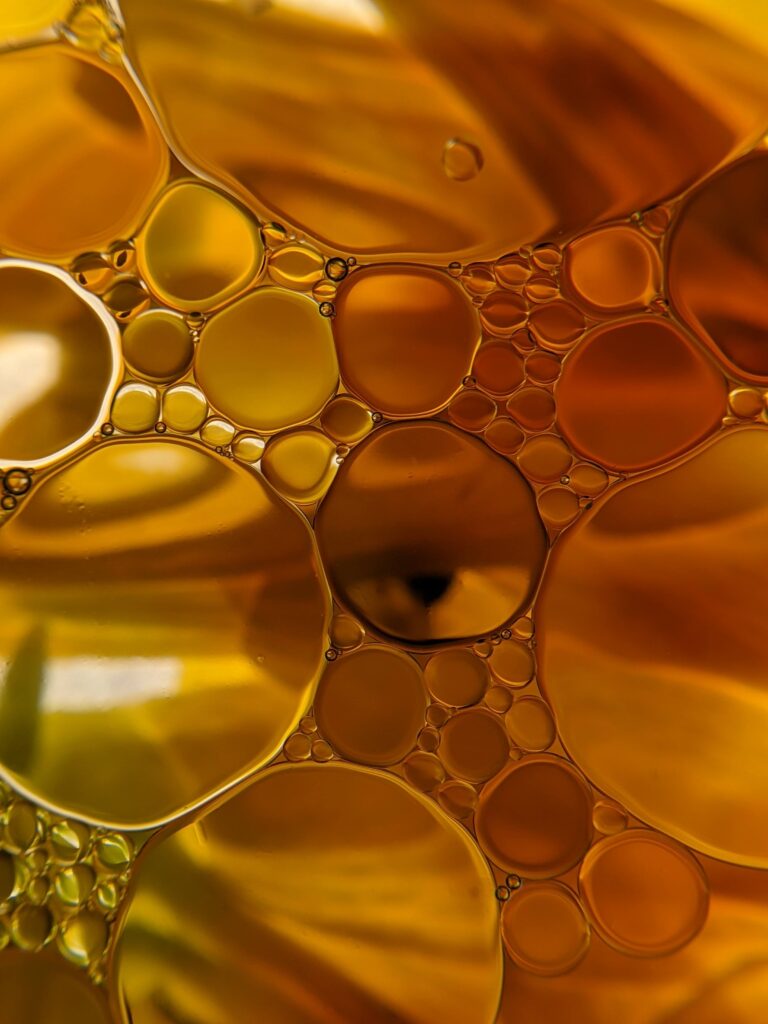Fatty acids are fundamental parts of lipids. In nature, the most widespread ones consist of a carboxylic group (-COOH), preceded by a linear Carbon atoms chain bound to hydrogen atoms.
Fatty acids differ according to two criteria: the number of carbon atoms and the type of bond.
Basing on the number of carbon atoms, fatty acids are divided into:
a) short-chain fatty acids up to 4 carbon atoms of which the main one is butyric acid (4: 0), whose trophic and protective role at the level of the colon mucosa is of significant importance;
b) medium chain fatty acids up to 12 carbon atoms with metabolic and energy functions;
c) long-chain fatty acids (LCFA) up to 18 carbon atoms with an energetic, metabolic and structural role, which in turn can be classified into:
– saturated LCFAs (myristic acid 14: 0, palmitic acid 16: 0, stearic acid 18: 0) which include both the deposition triglycerides and the structural components of the membrane;
– monounsaturated LCFAs (18: 1 omega-9 oleic acid) with hypocholesterolemic function;
– Polyunsaturated LCFAs which are essential (18: 2 omega-6 linoleic acid and 18: 3 omega-3 linolenic acid).
d) very long chain fatty acids from 20 carbon atoms onwards (omega-3, omega-6, omega-9) and their derivatives prostaglandins, thromboxanes and leukotrienes.
Depending on the type of bond, fatty acids are divided into saturated when they all have simple bonds (-CC-) without double bonds and unsaturated, divided into monounsaturated when they have one double bond (-C = C-) and polyunsaturated when they have more double bonds.
TRANS FATTY ACIDS

Trans fatty acids are formed through a hydrogenation process which consists in the addition of hydrogen atoms on the double carbon bonds.
Trans fatty acids are frequently found in industrial food products such as margarines, fried foods, confectionery, prepackaged foods, etc. The food industry uses this process with the aim of making vegetable oils solid, which would otherwise be liquid at room temperature.
During the hydrogenation process, trans isomers of unsaturated fatty acids are formed (the double bond between the two carbon atoms becomes -trans instead of -cis). Some of these isomers are responsible for the increased risk of cardiovascular disease, the increase in low density lipoprotein (LDL) and a higher incidence of some forms of cancer.
Some trans forms of unsaturated fatty acids, such as conjugated linoleic acids, are instead naturally present in some natural foods due to a biohydrogenation process that occurs in the stomach of ruminants by intestinal bacteria. Recent studies suggest their protective role against heart disease and cancer. Although the research appears promising, no firm conclusions can be drawn regarding the optimal content, so there is no indication as to their intake. They are found in fatty foods derived from ruminant animals, such as whole milk, dairy products and fatty meats.
Essential fatty acids (EFAs)
The human body can synthesize all polyunsaturated fatty acids except the 2 precursors: a-linolenic acid or ALA (C18: 3, w3) of the omega-3 family and linoleic acid (C18: 2 w6), of the omega-6 family.
From these fats, commonly referred to as essential fatty acids or EFAs, humans are able to synthesize all the other polyunsaturated fatty acids, through enzymes that allow to lengthen the carbon chain (elongase) and to increase the number of double bonds (desaturases), obtaining different series of compounds, depending on the location of the double bond.
The effects of polyunsaturated fatty acids
The actions of polyunsaturated fatty acids address several functions. Unlike omega-6, contained in vegetable oils that the Mediterranean population takes in abundant quantities for established habits, omega-3 fatty acids are scarcely represented in our daily diet.
Eicosapentaenoic acid (EPA) and docosahexaenoic acid (DHA) are found mainly in cold-water fish (tuna, salmon and blue fish), crustaceans and some vegetable oils (linseed oil, hazelnut oil, rapeseed oil) which however are richer in ALA.
The intake of EFAs is essential for the state of health, since they are important constituents of the cell membranes of organs and tissues and are able to positively modulate various biological processes, ensuring protection from physiological and pathological events.
Lack of EFAs can have various consequences:
growth retardation, reproductive problems, skin lesions, kidney and liver disorders, impaired synthesis of lipoproteins, neurological and visual problems, chronic intestinal diseases, impaired metabolism of fatty acids and behavioral problems, such as attention deficit and hyperactivity.
The role in the diet of omega 3 EPA and DHA in prevention is well established, with mutually synergistic and complementary effects. DHA performs a structural function, as it is present in the phospholipids of the brain synaptosomes, in the retina and in the phospholipids of the intramembrane sodium channels and positively influences visual acuity and cognitive functions. EPA is the main precursor of series 3 prostaglandins, which possess an important antiplatelet activity.
Not only the excessive calorie intake, but also the low intake of EPA-DHA has significant consequences, so much so that it is indicated as the second most frequent cause of death in the US related to incorrect dietary habits.
The omega-3s have a fundamental role for the health of the organism, they perform important functions for growth, energy production, the integrity of cell membranes, as constituents of phospholipids and those of mitochondria, they intervene as chemical mediators to cellular level and in the synthesis of hemoglobin, participate in sexual and reproductive functions, act in some skin and retinal diseases, contribute to a better tolerance of carbohydrates in diabetics, help for the reduction of total and LDL cholesterol and assist other multiple functions .
BIBLIOGRAPHY
“II ruolo degli omega-3 nel paziente pluripatologico complesso “Mauro Campanini, Roberto. QUADERNI – Italian Journal of Medicine 2015; volume 3:241-24

